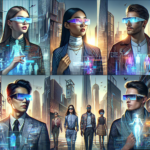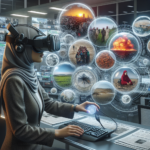Driving Innovation: How Immersive Technologies are Revolutionizing Automotive Design 🚗
The Intersection of Technology and Design

In today’s fast-paced world, the automotive industry is witnessing a remarkable transformation fueled by immersive technologies. From advanced virtual reality (VR) applications to cutting-edge augmented reality (AR) tools, car manufacturers are embracing these innovations to redefine how they design, develop, and present their vehicles. As we delve into the exciting realm of automotive design, we will explore how immersive technologies are shaping the future of the industry.
What are Immersive Technologies? 🤔
Immersive technologies encompass a suite of digital tools that create interactive environments, allowing users to engage with content in innovative ways. These technologies include:
- Virtual Reality (VR): A fully simulated environment that immerses users in a three-dimensional space.
- Augmented Reality (AR): Enhancing the real world by overlaying digital elements onto physical environments.
- Mixed Reality (MR): A convergence of both VR and AR, merging real and virtual worlds for interactive experiences.
- 3D Modeling and Simulation: These tools provide realistic representations of vehicles, enabling better design choices.
Revolutionizing the Design Process
One of the most significant impacts of immersive technologies on automotive design is the way they revolutionize the production and prototyping processes. Traditional design methods often involve lengthy iterations and physical prototypes, which can be both time-consuming and costly. Immersive technologies streamline these processes, offering several advantages:
- Enhanced Visualization: Designers can visualize their ideas in real-time, reducing ambiguity and improving accuracy.
- Rapid Prototyping: VR and AR allow for quicker and more efficient prototyping, enabling teams to iterate designs almost instantaneously.
- Global Collaboration: With digital platforms, designers and engineers from around the world can collaborate seamlessly, regardless of geographical boundaries.
- Better Communication: AR and VR tools allow teams to present their designs in a more engaging manner, facilitating feedback from stakeholders.
Empowering the Design Teams
Immersive technologies are not just changing how cars are designed; they are also empowering design teams to unleash their creativity. By providing an interactive setting where design concepts can be explored and tested, these tools inspire innovation and originality.
Some notable applications include:
- VR Design Studios: Virtual spaces where designers can interact with their digital units, examining them from every angle.
- Real-time AR Interfaces: Allowing designers to visualize changes directly in the physical space, promoting iterative processes.
- 3D Scanning and Printing: Technologies that offer rapid design modifications, enabling quick adjustments to physical prototypes.
Enhancing Customer Experience
As the automotive industry continues to evolve, so does the way consumers engage with their vehicles. Immersive technologies have transformed the customer experience by offering potential buyers a unique way to explore and understand new models.
Examples of how AR and VR are enhancing the car-buying journey include:
- Virtual Showrooms: Customers can tour virtual showrooms from the comfort of their homes, interacting with digital versions of vehicles.
- AR Vehicle Configurators: Allowing customers to customize and visualize their dream car in real-time, bringing their visions to life before purchase.
- Immersive Test Drives: Prospective buyers can take virtual test drives, experiencing the feel of a car without leaving the dealership.
The Role of Data in Automotive Design
Immersive technologies are not just visual; they also generate valuable data that can inform design decisions. By analyzing how users interact with designs in virtual environments, manufacturers can glean insights into preferences and behaviors.
- User Feedback: Real-time analytics during AR/VR sessions help designers understand consumer reactions and refine their concepts accordingly.
- Design Optimization: Feedback loops enable teams to continuously improve designs based on user interactions and preferences.
- Market Research: Immersive tech allows manufacturers to gauge interest in various features or designs before finalizing the production model.
Challenges and Considerations Ahead ⚙️
While the potential of immersive technologies in automotive design is exciting, there are challenges to consider:
- Technology Adoption: Manufacturers must invest in training their teams to effectively utilize these cutting-edge tools.
- Integration into Existing Processes: Seamlessly incorporating immersive tech into traditional workflows can require significant shifts in methodology.
- Cost Implications: Initial setup costs for AR/VR tools can be high, yet they often yield long-term savings through increased efficiency.
Looking Forward: The Future of Automotive Design
As immersive technologies continue to advance, they are bound to unlock even greater possibilities within the automotive sector. Innovations will likely lead to:
- More Personalized Vehicles: Tailoring designs to individual consumer needs through data-driven insights.
- Increased Sustainability: Using virtual simulations to explore environmentally friendly materials and designs before physical production.
- Expanding Market Reach: Utilizing digital experiences to attract a younger, tech-savvy audience that prefers engaging online experiences.
In Summary
The fusion of immersive technologies with automotive design practices is more than just a trend; it represents a critical evolution in how vehicles are conceptualized and brought to market. As manufacturers embrace these tools, they stand to transform not only their design processes but also the entire car-buying experience. The road ahead is filled with exciting possibilities, ensuring that the future of automotive design will be brighter—and more immersive—than ever before! 🌟




0 Comments